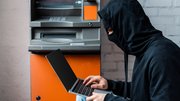Blog
I'm in the mood! Watch me hit up the ATM for cash!
March 25, 2014 by Richard Buckle — Founder and CEO, Pyalla Technologies, LLC
My grandfather was a newspaper man, as were my father and most of my uncles, and a consistent theme in our household was, "What did you read, today?" Whether newspapers or YouTube clips, e-magazines or the evening news, I rarely shirk from absorbing as much as I can.
This includes trolling down through other blog posts at ATM Marketplace, and one in particular caught my attention this week. In "There's more to branch transformation than ATM deposit automation," blogger Terrina Rishel said something that really popped:
While ATMs have added significantly to consumer convenience, they cannot perform enough complex transactions to eliminate an institution's greatest costs. Unfortunately, there are still many complex transactions that cannot be performed at an ATM. Additionally, many consumers are still not comfortable operating an ATM or using a PIN.
To read of consumers as yet not comfortable operating an ATM or using a PIN surprises me. These technologies have been part and parcel of our daily routines since the early 1970s — so what can we do to make ATMs more appealing to those still uncomfortable with them? What can we do with PIN use?
Americans still depend on signatures, even when it comes to debit cards – I only recently found out that I don't need to enter a PIN to complete a transaction. POS terminals where I shop all let me hit "cancel" and then select "credit." I sign a piece of paper as proof of who I am even when finalizing my transaction at a fully automated supermarket checkout!
So, if PINs are not required for most debit transactions, it's no wonder that folks are wary of them and that making it attractive to initiate simple banking transactions at an ATM is a lost cause.
With all the concerns over personal information being pilfered from even the biggest and assumedly most secure banks and retailers, authentication has become very important. So if not PINs, then what? And if ATM use is to improve and attract all demographics (and handle the most complex of transactions) where to next?
In a Networking Dynamics News email update on March 17, company CEO Henry Araya wrote, "Combinations of biometrics and/or two-factor are the only thing that will be used for authentication, however 2-factor can also be spoofed in some cases, so biometrics is the safest."
I've been a big fan of biometrics from the first time I saw them used in early movies. There's something really cool about a scanning device that recognizes you just by the observing you. "Stop slouching and stand up straight," has yet to come from any such equipped ATM, but it's bound to happen one day, and I just can't wait to see the response such greetings generate.
Biometrics has taken hold for more mundane reasons in some parts of the world.
"One of the challenges indeed is cards getting lost and PINs being forgotten," OmniPayments Inc. CEO Yash Kapadia wrote in a recent article in the HP user community magazine, The Connection. "A customer can identify themselves by placing fingers on the fingerprint reader and entering their national identity number [with] a fingerprint database maintained either by the financial transaction switch or by the sponsoring bank."
So while some of what we watch happening in movies may not be factual, biometrics is proving practical among the underbanked, where fear of machines apparently isn't deterring those in need.
Software associated with biometrics is undergoing a quiet revolution — and perhaps berating me for my posture isn't out of the question. The New York Times article, Attention, Shoppers: Store Is Tracking Your Cell, Ekaterina Savchenko, head of marketing at St. Petersburg, Russia, startup Synqera, said her company is selling software for checkout devices or computers that tailors marketing messages to a customer's gender, age and mood, measured by facial recognition.
It was this quote from Savchenko that stopped me in my tracks: "If you are an angry man of 30 and it is Friday evening, [the store] may offer you a bottle of whiskey."
When it comes to making consumers comfortable operating an ATM and using a PIN, perhaps the answer is to cheer them up: "Well done! Only five attempts this time! And with that, here's a coupon for a discounted latte at Starbucks across the street!"
If FIs are concerned about their costs and are looking for ways to encourage increased use of their ATMs, perhaps all that's required is a little more carrot and a lot less stick.
Don't threaten to close a lot of branches. Instead, offer coffee for a transaction well done. I might come back for seconds and, depending on my mood, I might even stand up straight!
About Richard Buckle
Richard Buckle is the founder and CEO of Pyalla Technologies, LLC. He has enjoyed a long association with the Information Technology (IT) industry as a user, vendor, and more recently, as an industry commentator, thought leader, columnist and blogger. Richard participates in the HPE VIP Community where he is part of their influencer team.













